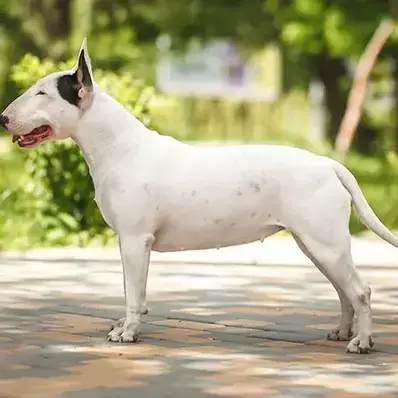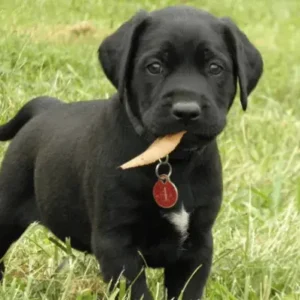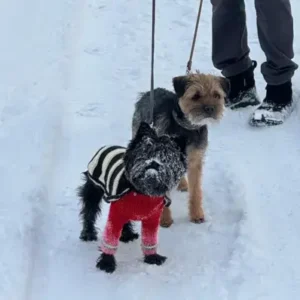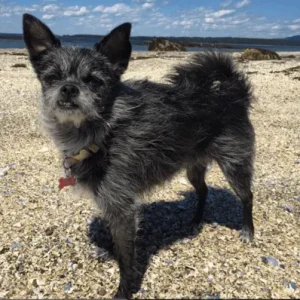Bull Terrier Origin
It’s fascinating how the Bull Terrier, known today as a friendly and loyal companion, has such a fierce origin. The breed’s history dates back to 13th-century Britain, where bull-baiting—a cruel sport where Bulldog attacked tethered bulls—was a popular form of entertainment.
Although this brutal practice was outlawed in the 1830s, dogfighting soon replaced it, with dogs battling each other in secret pits. Other names include the English Bull Terrier and Bully Terrier.
The Bull Terrier is recognized by the American Kennel Club (AKC) under the Terrier group.
Bulldogs were too slow for these fights, so they were crossed with English terriers, resulting in the powerful yet agile Bull Terrier. As dogfighting was eventually banned, the Bull Terrier shifted roles, becoming a fashionable pet among young gentlemen of the mid–1800s.
Breeders refined both the breed’s appearance and temperament, transforming it into the charming companion it is today.
Bull Terrier History- Source: AKC.org
In the early 1860s, James Hinks, an Englishman, took the Bull-and-Terrier cross and standardized it, creating the modern Bull Terrier. Initially, they were all white, but colored varieties appeared in the early 20th century.
The Bull Terrier and Staffordshire Bull Terrier share a common terrier breed and have similar characteristics, but they are distinct dog breeds with unique traits.
Bull Terrier Personality
Bull Terriers are often described as stubborn yet comical, possessing a vivid imagination and a generally good-natured demeanor. They thrive in family environments, though families with small children should supervise playtime as these dogs can be quite rambunctious.
- Bull Terrier Temperament
They’re known to be protective, especially if they sense danger toward a family member, and they form strong bonds with their humans. Energetic and playful, they enjoy regular exercise, long walks, and being close to their loved ones. With firm, positive training, Bull Terriers respond well and are highly trainable.
- Potential Challenges
Potential challenges with Bull Terriers include their energetic and stubborn nature. They can be too rough when playing with small children, so supervision is important. They also don’t like being teased, which can be a problem with younger kids.
They may try to dominate smaller pets in the house, so early socialization is key. Without consistent training and enough exercise, they can become hard to manage or act out when bored. Proper guidance and obedience training help prevent these issues.
Bull Terrier Physical Appearance
The Bull Terrier is a strong and sturdy dog breed, with a body that is a bit longer than tall. Its front and back legs are medium length, and the back legs have strong muscles. The dog has round, compact feet that may seem small for its size, but they help it move with power and agility.
- Size
This purebred dog usually stands about 21 to 22 inches tall at the shoulder. They have a sturdy build, with their weight ranging from 50 to 70 pounds. This size gives them a strong and muscular appearance, reflecting their active and energetic nature.
Miniature Bull Terrier- Source: AKC.org
- Coat color
The Bull Terrier’s coat is short, smooth, and glossy, with a tough texture. They come in two color types: white and colored. White Bull Terriers are entirely white, though they may have colored markings on their head. Colored Bull Terriers can be any color except white, including combinations like Fawn, White, Pied, or Brindle.
White Bull Terrier- Source: Britannica
Brindle Bull Terrier- Source: Britannica
Bull Terrier Gender Differences
Male Bull Terriers tend to be more adventurous, playful, and outgoing compared to females. They may also display higher levels of aggressive behavior, making early neutering a good idea. Intact males are more territorial, and possessive, and can try to dominate smaller dogs.
In contrast, female Bull Terriers are often more affectionate and calm. They remain playful but generally show greater tolerance toward children and other pets.
In terms of size, males typically weigh between 60 and 70 pounds, while females are slightly smaller, weighing between 50 and 60 pounds.
Bull Terrier Feed/Nutrition
The recommended daily amount for an adult Bull Terrier is 4 cups of high-quality dog food, split into two meals. The exact amount your dog needs can vary based on factors like size, age, build, metabolism, and activity level. Since dogs are individuals, their food requirements can differ.
Additionally, the quality of the dog food affects how well it nourishes your dog. To maintain your Bull Terrier’s health, measure their food and provide it in two meals each day, rather than leaving food out all the time. Watermelon can be a great, hydrating treat for your Bull Terrier in moderation, but be sure to remove the seeds and rind.
Bull Terrier Health
Bull Terriers are generally healthy, but like any breed, they can face certain health issues. Here are some potential problems:
- Hereditary Nephritis: This severe kidney disease in Bull Terriers involves small, undeveloped kidneys or faulty filters, leading to high protein levels in the urine. It usually results in early death, often before the dog reaches 3 years old. To help prevent this, have your dog tested annually with a urine protein/urine creatinine.
- Polycystic Kidney Disease: PKD is characterized by the growth of multiple fluid-filled cysts in the kidneys, causing kidney dysfunction over time. Early diagnosis can help manage the condition. Regular veterinary check-ups and monitoring are recommended, though there is no specific preventive measure for PKD.
- Deafness: Deafness, common in Bull Terriers, particularly white ones, can affect one or both ears. It is often a congenital condition. Ensure all puppies undergo BAER (brainstem auditory evoked response) testing to check for hearing issues. Deafness in one ear can be managed, but deafness in both ears requires special training and handling.
- Heart Disease: This condition involves defects in the heart’s structure and function, sometimes detected by a heart murmur. Some Bull Terriers outgrow their murmurs, while others may develop heart failure. Regular veterinary check-ups, including cardiac ultrasounds if needed, can help detect heart issues early. Treatment may range from medication to surgery, depending on the condition’s severity.
- Skin Problems: Bull Terriers, especially white ones, often suffer from sensitive skin prone to rashes, sores, and irritations. Allergies from substances or airborne allergens can also occur. Regularly inspect your dog’s skin and promptly address any rashes. Provide clean, soft bedding, and consider a diet with fewer additives to help manage skin sensitivity.
- Spinning: Spinning is an obsessive behavior where the Bull Terrier chases its tail, possibly linked to seizures. It often begins around 6 months of age. If spinning becomes severe, consult a veterinarian for treatment options such as medications. Managing boredom and providing mental stimulation can also help reduce the behavior.
- Lens Luxation: Lens luxation occurs when the eye’s lens is displaced due to the deterioration of the supporting ligament. This condition can sometimes be treated with medication or surgery, but severe cases might require eye removal. Regular eye exams can help detect this issue early and allow for timely intervention.
Bull Terrier Care and Grooming
They need 30 minutes to an hour of exercise daily, enjoying activities like walking, ball chasing, and interactive toys. They can also participate in agility and obedience trials.
Always use a leash to prevent them from chasing animals or exploring on their own. Until they are fully grown, avoid high-impact activities to protect their developing joints.
Early and consistent training is key. Use positive reinforcement and play to motivate them, while maintaining firm expectations. Bull Terriers can be challenging to housetrain and may benefit from crate training to avoid destructive behavior.
Socialize them early with people and other dogs to reduce aggression and suspicion.
Grooming is straightforward: brush weekly with a rubber mitt or curry brush, more frequently during shedding seasons. Bull Terriers don’t need frequent baths; dry shampoo or a damp cloth will usually suffice.
Brush their teeth two to three times a week, trim nails monthly, and check ears weekly for debris. Start grooming routines early to make it a positive experience, ensuring easier veterinary visits later. Incorporating dog training tips during grooming sessions, like rewarding calm behavior, can help your pet stay relaxed and cooperative.
Bull Terrier Rescue Groups
Rescue organizations often have Bull Terriers available for adoption, offering a second chance to dogs in need. Adopting from a rescue can be a rewarding experience, as these dogs are typically assessed for health and temperament before being placed in homes. Many rescues also provide support and guidance to help integrate the dog into your family successfully.
How Much Does Bull Terrier Cost?
The price of a Bull Terrier typically ranges from $1,800 to $3,000, depending on factors such as breeder reputation, pedigree, and location.
When purchasing a Bull Terrier, seek out reputable breeders who prioritize ethical breeding practices. Responsible breeders ensure their dogs are raised in healthy, clean environments and conduct health screenings to prevent hereditary diseases.
Interesting Facts
- One of the most famous Bull Terriers is Bullseye, the mascot for Target. Bullseye has made numerous TV appearances and is well-known for his role in promoting the brand.
Bullseye- Source: Target Corporation
- Bull Terriers have also been featured in shows such as The Simpsons, where a character named “Spunky”.
Bull terrier in The Simpsons- Source: Simpsons Wiki- Fandom
- General George Patton had a Bull Terrier named Willie.
Willie- Source: AKC.org
- They have been featured in the Westminster Kennel Club.
Best For
Bull Terriers are best suited for individuals or families who can provide them with ample exercise, mental stimulation, and consistent training. They thrive with active owners who enjoy playing and engaging with their dogs and can manage their strong-willed nature. A Bull Terrier is ideal for someone who can dedicate time to socialization and training, ensuring a well-behaved and happy companion.
Top Names
| Male Bull Terrier Names | Female Bull Terrier Names |
| Max | Bella |
| Rocky | Luna |
| Duke | Ruby |
| Zeus | Daisy |
| Jack | Zoe |









 Bull Terrier History- Source:
Bull Terrier History- Source: 
 Miniature Bull Terrier- Source:
Miniature Bull Terrier- Source: 
 White Bull Terrier- Source:
White Bull Terrier- Source:  Brindle Bull Terrier- Source:
Brindle Bull Terrier- Source: 
 Bullseye- Source:
Bullseye- Source:  Bull terrier in The Simpsons- Source:
Bull terrier in The Simpsons- Source:  Willie- Source:
Willie- Source: 






